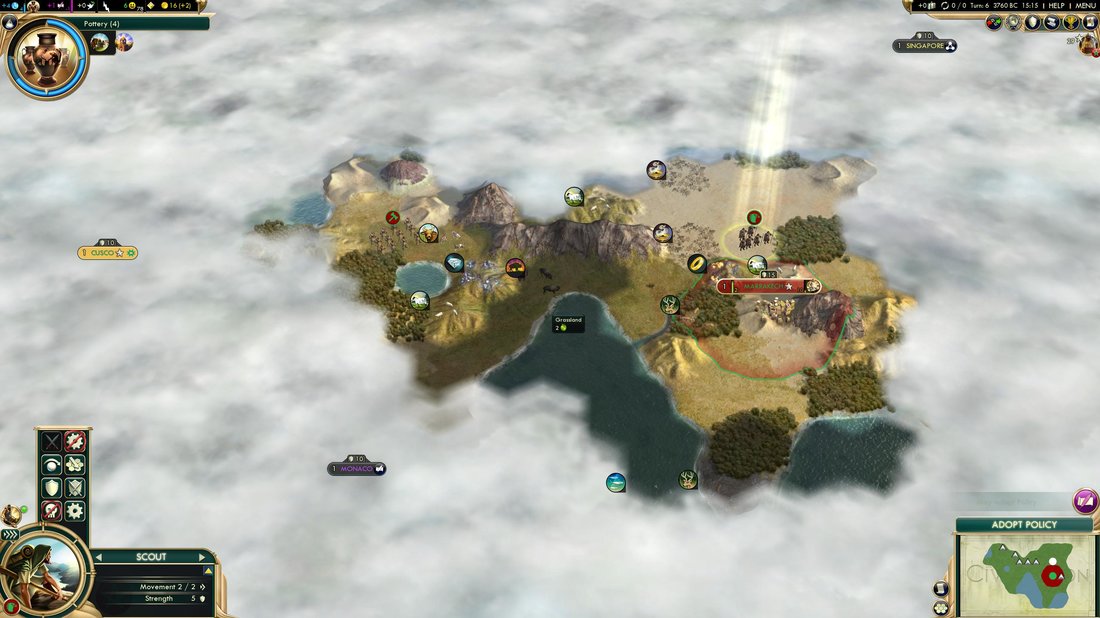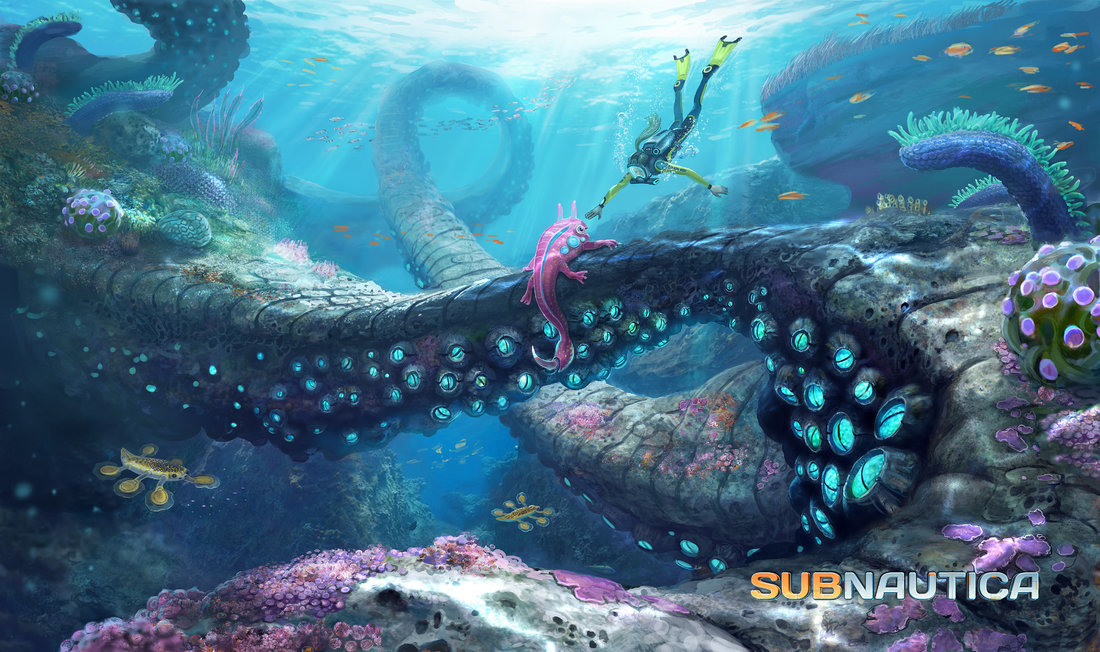Curiosity is the pleasure of learning and not knowing. It sparks the desire to learn or the desire to figure out how stuff works. Curiosity is closely related to the difference between ‘wanting’ and ‘liking’. When you are curious you feel anticipation, you want to know or try out something. Curiosity involves trial-and-error which comes very natural to games. As a player you constantly try out stuff in games and when it doesn’t work, you try again. There is a little bit of curiosity in every game. Games are a safe environment in which players learn the rules of the game. It’s the reason we start playing any game in the first place and it’s often the reason we cannot stop. We need to know what happens next.
Psychologists are divided when it comes to curiosity as a personal trait. Some research suggests that we are born curious, which it makes sense because children are naturally curious. On average a child will ask 26 questions per hour (Chouinard, 2007), that’s how curious they are. Think about a child you know and you will agree, they ask anything. Some questions are very silly: “Why are they called cupcakes?” and “Why do I have to wait to eat?”, Others are more scientific: “Why is the sky blue?” and “Why is the sea salty”. But sometimes they ask very tough-to-answer questions like “Why do people die?”. At the other side, researcher acknowledge that some adults are more curious that others. Not every child becomes a curious scientist when they grow up. From experience we can tell that children become less curious when they grow up. Research also confirms this, curiosity becomes less robust over time (Coie, 1974).

It’s no wonder that developmental psychologist Piaget became interested studying the phenomena as well. Piaget (1969) describes curiosity as the urge to explain the unexpected. But being curious is hugely beneficial, not just for kids. People who are curious about something learn more and better (Berlyne, 1954). Curiosity allows for deep understanding in the subject you’re curious about. Older children who are intrigued by unexpected or mysterious descriptions in their reading are more likely to remember it and understand the content more deeply (Garner, Brown, Sanders, & Menke, 1992). But what about games? How can curiosity be beneficial for improving your game design? Games are about learning, you’d like the player to learn how to play your game while playing. When players are curious about your game they’ll pick up the mechanics and features much better and quicker. It’s more likely your players will keep playing as well. Furthermore, when a player’s curiosity is satisfied they feel pleasure (Kang et al. 2009). Curiosity can make your game more fun for any player as long as you satisfy that hunger for getting to know your game and its mechanics. Curiosity is also a motivational prerequisite for exploratory behavior (Berlyne, 1960). It could be that you want your player to explore more of your game. Curiosity is a great intrinsic motivator as well that encourages players to learn and try new things.
To get your players curious you can use the idea of uncertainty and surprise. When parts of the game take a surprising or unexpected turn, players get curious about what happens next. Predictability is the enemy here. You should be cautious with fear however. Scaring the player will stop them from exploring or trying. But also fear of failure is detrimental for exploration and curiosity. When a player is afraid to fail they will become cautious and keep to what they already know. They won’t become curious and they won’t try something new. Fowler (1965) has done research into what makes people curious. He found that boredom is one prerequisite or motivator for curiosity. Boredom can push the player to explore your game, find its secrets and possibilities. According to Fowler’s research you should make parts of your game boring. It’s a weird and counter-intuitive idea but is great for sandbox and exploration games. The players of these games are used to trying stuff out on their own. Being a bit boring from time to time can make the player crave for more and start exploring on their own.
Subnautica
Exploration and survival games naturally evoke curiosity in players. Often players are told very little when they start the game. Sometimes there is a small tutorial that explains the player how to interact with the game but that’s it. Players are supposed to figure most of the game out by themselves. Subnautica is a good example, the player is told next to nothing when they start. One of the reason might be because the game is still in early access but it works wonders for this game. According to the story, your spaceship has crashed on an unknown alien world. As a player you are given as much information as the character you play. The crafting system feeds the player’s curiosity as well. The player is constantly trying out things and figure out how to get certain items. Before you can craft and item you need to explore the world to gather the resources. While you are gathering the necessary resources you get to know the alien world. You explore new animals and plants you have never seen before.
Suggestions for design
According to psychological theory there are a couple of things you should take into account when designing an exploration or survival game. Be careful with scary surprises. Players shouldn’t be afraid to explore and try new things. You should also limit punishment in your game when possible. Of course you want to let your players know what’s good and what’s bad but too much punishment can make players think they are playing the game ‘wrong’. They will try to play the game ‘right’ which means they won’t feel the need to explore in order not to mess up the game. To aid more curiosity in your game, you can design for pleasant surprises. Think about an unexpected combination of resources to make a certain item in a crafting game or system. You can think about leaving some hard-to-reproduce bugs and glitches in your game (as long as they don’t break the game). Glitches and bugs are good conversation material among players that stumble across them. The same is true for Easter eggs, although they require more development time.
 Go and explore the world!
Go and explore the world!
Narrative elements can create curiosity as well when done right. The narrative should keep the player craving more of your game. Subnautica is a very good example of how to do good game narration. The narration is barely noticeable but it leaves every player with a ton of questions. Every time a part of the story is told and bits of information are given. While it might answer some questions it also creates many more. It leaves room for imagination and speculation.
As mentioned before curiosity is very natural to games. Games are a safe environment that encourages trial-and-error. Of course there are things any game type and genre can use to improve its curious nature. When it comes to tutorials it’s good to realize that there is no need to explain every detail of the game to the player. Keep to the core mechanics and the bare essentials the player needs to know to get started. You can leave it up to the player’s curiosity to figure out other mechanics, features and possibilities. Losing a level because the player doesn’t understand an element isn’t bad either as long as players understands why they lost and how it can be overcome. Fog of war is also a great tool for exploring and curiosity. Traditionally fog of war is used in strategy games but the idea can be applied to many games, even to the world map of a casual puzzle game like 10×10 ice cream adventure.
 10X10 ice cream adventure
10X10 ice cream adventure
References and stuff
- https://www.youtube.com/watch?v=29Lw0k7HNdg
- http://science.howstuffworks.com/life/evolution/curiosity1.htm
- Berlyne, D. (1954). A theory of human curiosity. British Journal of Psychology, 45, 180–191.
- Coie, J. (1974). An evaluation of the cross-situational stability of children’s curiosity. Journal of Personality, 42, 93–116.
- Garner, R., Brown, R., Sanders, S., & Menke, D. J. (1992). “Seductive details” and learning from text. In K. A. Renninger, S. Hidi, & A. Krapp (Eds.), The role of interest in learning and development(pp. 239–254). Hillsdale, NJ: Erlbaum.
- Piaget, J., & Buey, F. F. (1969). Psicología y pedagogía. Barcelona: Ariel.
- Berlyne, D. E. (1960). Conflict, arousal, and curiosity.
- Fowler, H. (1965). Curiosity and exploratory behavior.
- Kang, M. J., Hsu, M., Krajbich, I. M., Loewenstein, G., McClure, S. M., Wang, J. T. Y., & Camerer, C. F. (2009). The wick in the candle of learning: Epistemic curiosity activates reward circuitry and enhances memory. Psychological Science, 20(8), 963-973.
